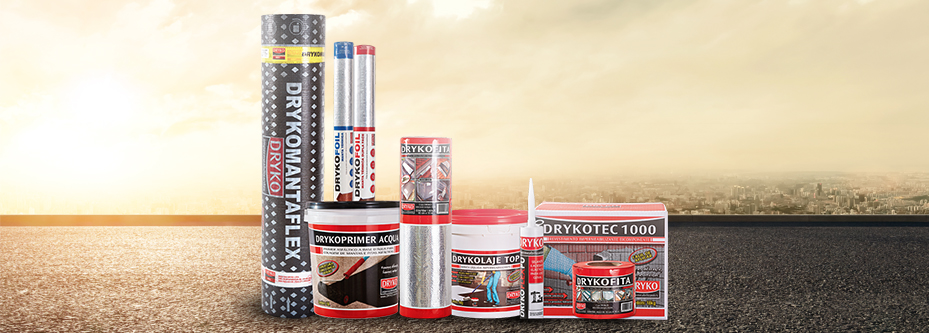July 6th, 2020
HOW TO CHOOSE ASPHALT BLANKETS?

Asphalt blankets are a flexible, prefabricated waterproofing system. It is produced based on asphalt modified with polymers and structural agents – which can be polyester, polyethylene or fiberglass.
It is indicated for applications in slabs, swimming pools, planters, curtains, cold areas, among others. But it is not recommended for places exposed to the water table.
The asphalt blanket has many points in its favor. Because it is prefabricated, it has a constant thickness, avoiding failures in waterproofing. It serves especially for application in structures that undergo movements. The areas are released quickly, as there is no need to wait for curing times. However, it requires specialized labor for application.
Composition and types
The blankets are made with asphalt and structural material (polyester, polyethylene or fiberglass). The structuring determines the tensile and elongation resistance. The NBR 9952/2007 lists the main technical characteristics of the blankets in the classification item, where they are divided into types I to IV, ranging from 3 mm to 4 mm, at least, in thickness. The blankets also differ in terms of the type of finish. The finishes can be of different types: aluminum, polyethylene, sanded, geotextile, sand.
Design, choice of blanket and dimensioning
NBR 9575, which standardizes waterproofing in terms of selection and design, gives guidelines as to what to use, where to use and the executive details of the types of waterproofing.
Usually, the criterion for choosing the waterproofing system used comes from the mechanical and thermal requirements of the structure. The waterproofing project needs to take into account the conditions of the work, location, interference, exposure, and define the solutions to meet the performance requirements in relation to tightness.
Another important aspect that must be addressed in the projects is the issue of maintaining waterproofing and interferences.
Application
The application of the asphalt blanket must be done by specialized professionals. The execution of the waterproofing systems also follows an NBR standard, the NBR 9574. The details that precede the waterproofing itself are also important
The surface must be smoothed, respecting the minimum drop in the direction of the water conductors. It is necessary to remove imperfections in the substrates, for a dry, firm surface, without cracks or protrusions and edges that could damage the blanket. Drains, on the other hand, must have a 1 cm recess with beveled edges; the plasterings of the eaves, walls and side walls must be perfectly adhered, and a space is left to tie the blanket, in addition to rounded corners and so on.
After all the preparation details have been completed, it is time to apply the coat of primer product, or primer, which must be applied in one coat, evenly. After applying and drying the primer, the blanket is applied, usually with a blowtorch or hot asphalt. For the overlapping of the second blanket, the coil is rolled out parallel to the first, regardless of the application system adopted – torch or asphalt, for example. Leave 10 cm of overlap and start applying the blanket, going in the direction of the drains to the highest dimensions.
Then, the leak test must be carried out to confirm the effectiveness of the waterproofing performed.



 (11) 2088-5701
(11) 2088-5701